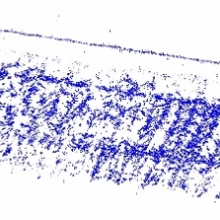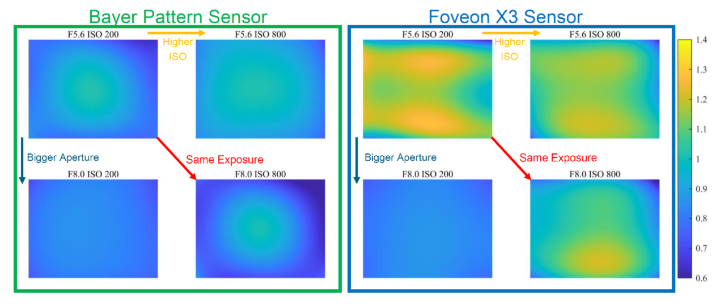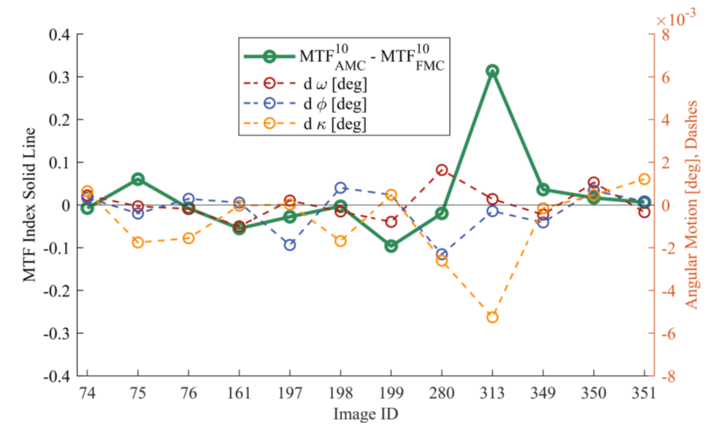Jiashu HU
Quality of (photogrammetric) cameras – image resolution and the impact of image blur compensation
Duration: 6 months
Completition: July 2023
Supervisor and Examiner: Dr.-Ing. Michael Cramer
With nowadays development of photogrammetry, image quality of camera systems is the most important base of corresponding research and production. To be specific, spatial resolution is taken as one of the most important aspects of image quality and discussed in detail here. In this research, two topics were focused on to investigate how image quality is influenced: color alignment and motion compensation.
Modulation Transfer Function (MTF) was adopted to describe how spatial frequency (spatial resolution) behave in a certain point. MTF-10 index, revealing 10% of which spatial resolution could still be transferred by the camera system, was picked as extreme criteria of spatial resolution. All measurements and analysis were based on this quantity.
For color alignment, both consumer level camera and industrial photogrammetric camera were investigated. Two consumer level cameras with sensors of different structures (Bayer pattern and Foveon X3) were taken into lab test and 3D reconstruction test.
Spatial resolution distribution on these two sensors were interpolated and visualized as follows:
Results
In general, point cloud generated by Foveon sensor images is more complete than point cloud Bayer Pattern sensor images with better performance in feature matching.
In summary, Foveon structure does have potential to offer more complete structure and more reliable feature matching. But, influence of lens quality, photoconversion characteristics as well as camera calibration still remain further quantitative research.
For motion compensation, adaptive motion compensation (AMC) developed by Vexcel Imaging company was tested and compared with previous forward motion compensation (FMC). AMC was created by including IMU measurements as well as local DEM to compensate not only image motion caused by forward motion as well as angular motion and scale variance, which is especially of concern for oblique imaging.
As illustrated in figure above, by making reduction of MTF-10 index measured in images processed by AMC (MTF10FMC) and FMC (MTF10FMC), such reduction (green solid line, refers to left axis) reveals spatial resolution difference between them. They were plotted together with angular rates measured by IMU integrated in the system. The figure shows certain correlation between AMC improvement and angular rates of the camera mounted on the platform. Such correlation is more obvious in oblique view images for they are usually influenced more by angular motion (turbulence involved).
In conclusion, AMC process brings obvious improvements in oblique view images especially those intervened with unstable flying situation or turbulence. Such improvement is not obvious with nadir view images. It is partially due to such difference is close to measuring accuracy. Which also remains interesting is the detailed shutter behavior as well as how IMU measurements were synchronized with each image taken. Such source of influence may contribute to more comprehensive evaluation of AMC.
Ansprechpartner

Michael Cramer
Dr.-Ing.Gruppenleiter Photogrammetrische Systeme





